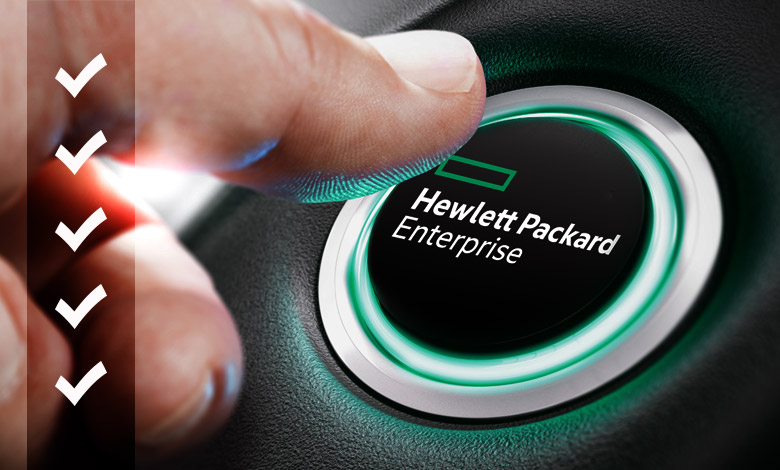You may have heard about Synergy, the latest server solution from HPE, but you’re unsure how something this unique might fit within your IT environment. Is it just a future replacement for HPE’s top-rated blade server platform? Knowing that HPE BladeSystem will continue to be available for at least another year and a half, why look at Synergy?
Here are five reasons you’ll want to learn more about the key features of Synergy and how it can help you meet your company’s IT needs for the future. Synergy’s composable infrastructure means you can run both traditional and cloud workloads on the same infrastructure and effectively achieve cloud service provider-like speed, agility, and efficiency.
Related: TechSperience Podcast Episode 20: HPE Security in the New Digital Landscape
1. HPE Synergy is much more than just an evolutionary improvement on HPE BladeSystem c-Class blade technology; it’s revolutionary! While c-Class blades will be available through at least December 2019, there are a number of key differences between c-Class and Synergy that should be considered when planning future server purchases:
- Synergy is Photonics-ready, meaning it will be able to support network bandwidth requirements well into the future as they’re developed.
- HPE has stated that Gen10 (using Skylake and Cascade Lake processors) will be the final server generation supported in the C7000 enclosure; while cutting its teeth on Gen9 and Gen10, Synergy will support server blades well beyond; even within Gen10, Synergy can handle the most power-hungry Intel processors that c-Class can’t. If you’re eager to put some of the Platinum processors (or any ‘M’ processors that support 1.5TB memory per processor) to work, you should be looking at Synergy.
- While the latest C7000 midplane is capable of 7Tbps of bandwidth, the Synergy midplane offers a bandwidth of over 16Tbps, delivering three times the bandwidth from each compute node when compared to BladeSystem; Synergy can support 100Gbit Ethernet (when it’s ready for prime time) and beyond, technology that the C7000 won’t be able to support.
- Synergy greatly extends the Virtual Connect network virtualization technology that was pioneered in c-Class, where two modules were needed in every blade enclosure of 16 blades; Synergy allows two VC modules (plus satellites) to provide network virtualization for up to five Synergy Frames, covering up to 60 blades!
- Synergy offers storage that was only dreamed of for c-Class. Up to 200 drives (HDD and SSD) can be allocated as needed individually to compute nodes within the same Frame, or pooled to allow the storage to be shared by other Frames.
- While OneView could fully manage c-Class blades (requiring an HPE OneView Advanced server license for each), the HPE Synergy Composer is a hardware management appliance powered by OneView. Two Synergy Composers (ideally installed in different frames for best redundancy) form a high-availability cluster to manage up to 21 frames and as many as 252 servers, with no additional server licenses.

2. HPE Synergy allows developers to leverage its software-defined infrastructure for physical, virtual, and containerized workloads; deploy applications at cloud-like speed; and automate everyday operations. This is all made possible by three primary attributes of a composable infrastructure:
- Fluid resource pools—These meet the changing needs of each application by allowing for fluid allocation of resources into appropriately sized pools of compute, storage, and fabric.
- Software-defined intelligence—Through a single interface that precisely composes infrastructure, service deployment is sped up by using workload templates, and unnecessary downtime can be eliminated using frictionless change.
- Unified API—This provides a single interface for infrastructure operations to be automated with an extensive ecosystem of partners, including Chef, Puppet, RedHat, Docker, and others.
3. Synergy goes beyond hyperconverged, providing the industry’s first composable infrastructure. This means fluid resource pools allow compute, storage, and network fabric to compose (and recompose) to meet changing workload demands.
4. Truly stateless operation is now possible. If you’ve dreamed of completely stateless compute, the HPE Synergy Image Streamer appliance provides this capability. If a portion of a compute pool could be better applied to a different workload at a certain time of day, or time of the year, the effort to make this happen just got way easier. So did server patching and updates—apply those to a golden image on the Image Streamer, and the compute modules that use that image are effectively updated at the next system restart. It’s possible for standup services to be deployed in minutes with a single line of code.
5. With the Unified API, users of the HPE Synergy Composer can programmatically access all management functions available through the GUI, saving time and reducing errors. This makes it possible to invoke infrastructure requests with only a single line of code. This is ideal for DevOps, where applications could be created that deployed new infrastructure items automatically.
Systems Engineers in the Connection Data Center Practice are trained and ready to assist you with your Synergy questions and configurations. And when you’re ready, they can also complete the installation, rapidly putting the power of HPE Synergy to work for you. Ask an Account Manager how Connection can build and implement an HPE Synergy solution for you.

